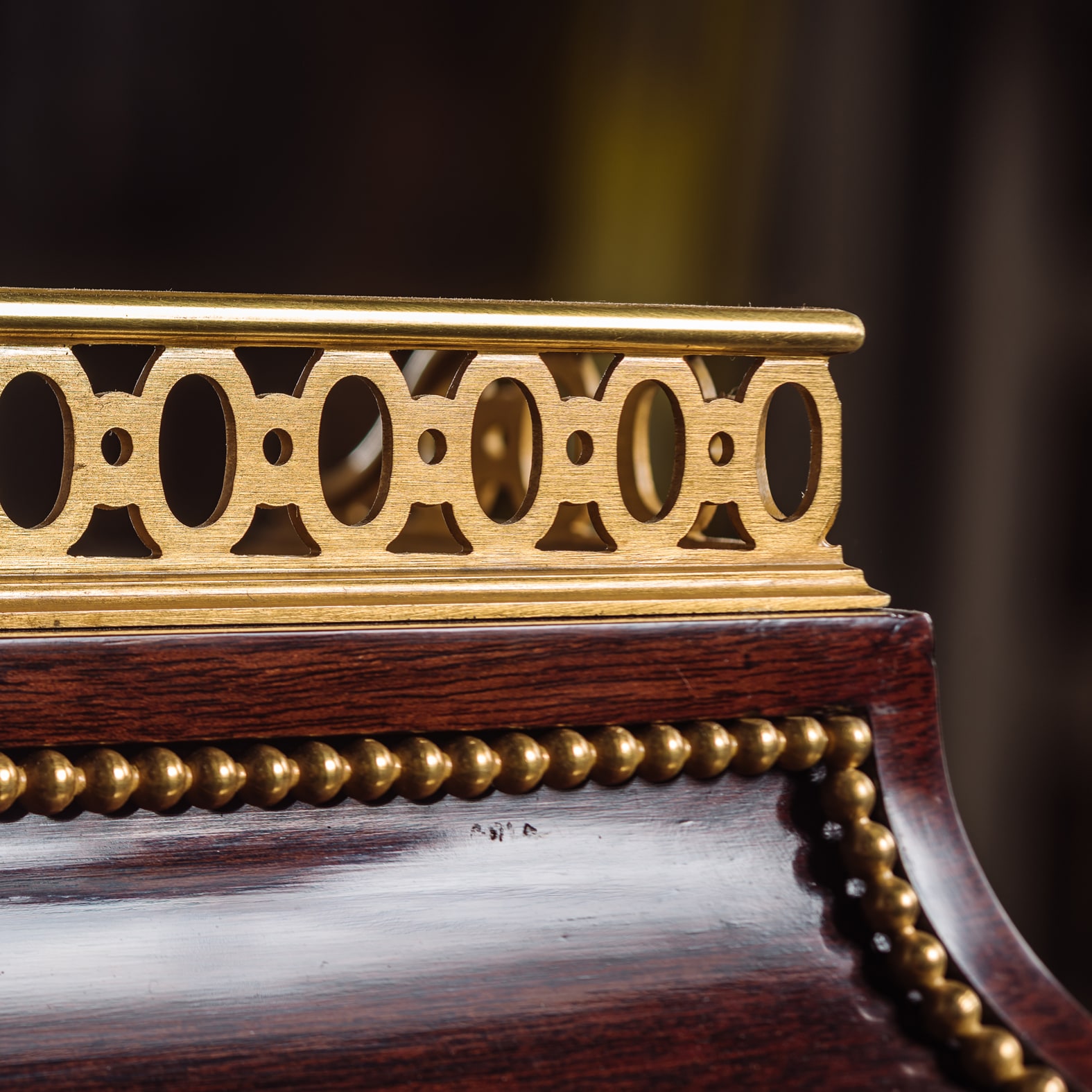Paul Sormani
Paire d'armoires en acajou de style Louis XVI montées sur bronze doré
£90,000
Paire d'armoires de style Louis XVI en acajou montées sur bronze doré par Paul Sormani. Signé sur les plaques de serrures 'P. SORMANI', 10 rue Charlot à Paris'. Cette...
Dimensions
Hauteur : 167 cm (66 in)Largeur : 108 cm (43 in)
Profondeur : 38 cm (15 in)
Description
Paire d'armoires de style Louis XVI en acajou montées sur bronze doré par Paul Sormani.
Signé sur les platines 'P. SORMANI', 10 rue Charlot à Paris'.
Cette importante paire de cabinets est plaquée d'un riche acajou flammé avec de fines montures en bronze doré. Les armoires ont un dessus partiellement galbé au-dessus d'une frise concave et d'un panneau monté avec des rosiers sinueux. Au-dessous se trouvent quatre portes encadrées par des pilastres cannelés ; les portes supérieures sont ornées de guirlandes de rubans en bronze doré. Les armoires reposent sur quatre pieds toupies.
Date
Circa 1870
Origine
France
Moyen
Acajou et bronze doré
Signature
Signé sur les platines 'P. SORMANI', 10 rue Charlot à Paris'.
Né à Venise en 1817, Paul Sormani (1817-1877) était un fabricant parisien de meubles de luxe. Son travail était décrit dans le catalogue de l'Exposition universelle de 1867 comme suit : toute sa production révèle une qualité d'exécution de tout premier ordre".
Sormani a exposé aux expositions internationales de Paris en 1849, 1855, 1867, 1878 et 1900, et de Londres en 1862, remportant de nombreuses médailles.
Paul Sormani établit l'entreprise en 1847 au 7 Cimetière Saint-Nicolas à Paris, puis déménage en 1854 au 114 rue du Temple, et en 1867 au 10 rue Charlot.
Après sa mort en 1877, le fils de Sormani, Paul-Charles, a repris l'entreprise qui a ensuite déménagé au 134 Boulevard Haussmann.
Il peut être difficile de dater le travail de Sormani, car l'entreprise a produit des meubles pendant près de quatre-vingt-dix ans. Toutefois, à la mort de Paul Sormani en 1877, sa femme et son fils ont repris l'entreprise et, à partir de cette date, les meubles sont généralement signés "Veuve Sormani & Fils".
Bibliographie :
Mestdagh, Camille & Lécoules, Pierre. L'Ameublement d'art français : 1850-1900, Les Editions de l'Amateur, (Paris), 2010.
Meyer, Jonathan. Great Exhibitions - London, New York, Paris, Philadelphia, 1851-1900, Antique Collectors' Club, (Woodbridge, UK), 2006.
Ledoux - Lebard, Denise. Les Ébénistes du XIXe siècle, Les Editions de L'Amateur, (Paris), 1984 ; pp. 583-588.












 Imprimer
Imprimer


